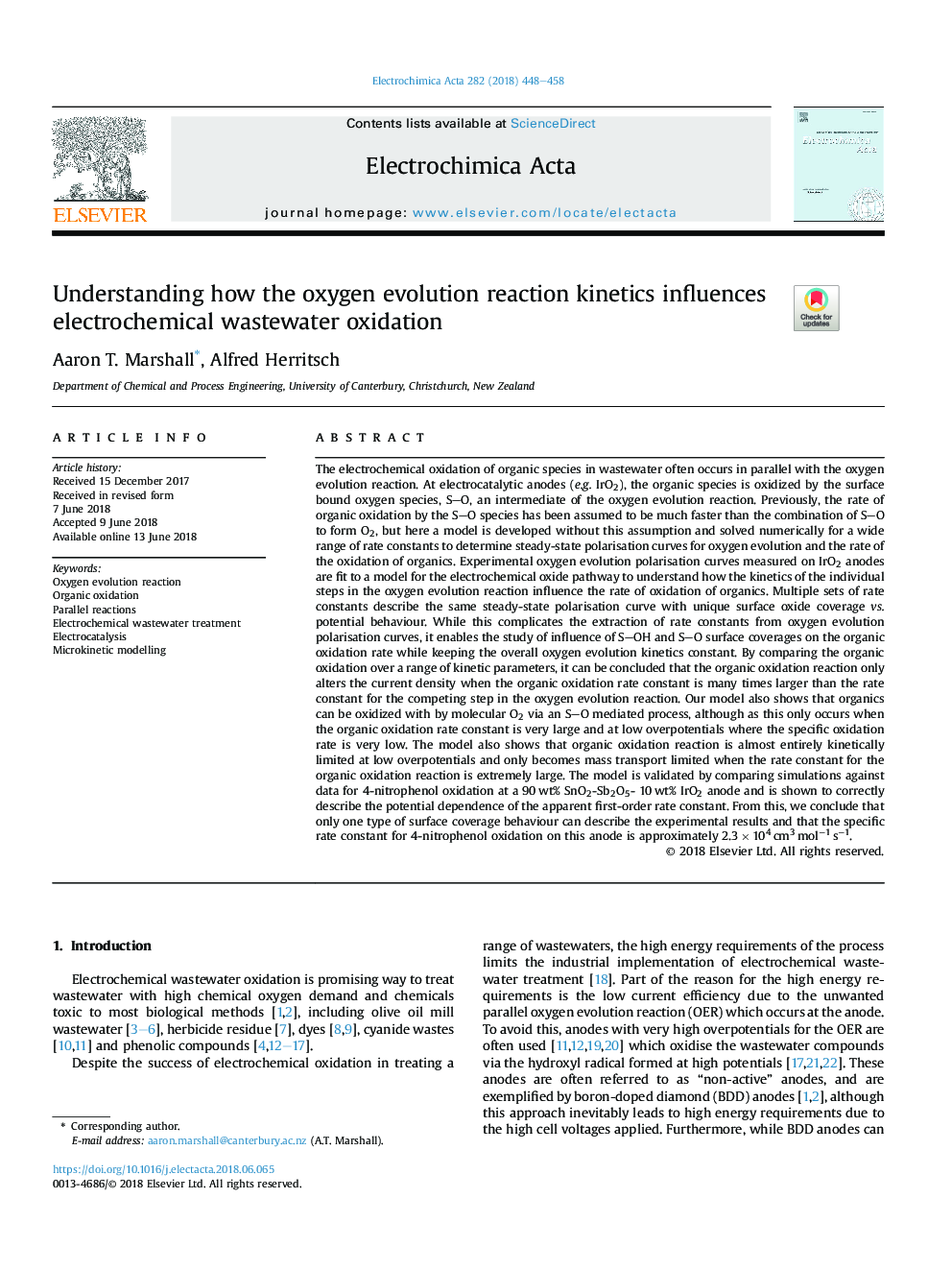| کد مقاله | کد نشریه | سال انتشار | مقاله انگلیسی | نسخه تمام متن |
|---|---|---|---|---|
| 6602207 | 1424075 | 2018 | 11 صفحه PDF | دانلود رایگان |
عنوان انگلیسی مقاله ISI
Understanding how the oxygen evolution reaction kinetics influences electrochemical wastewater oxidation
ترجمه فارسی عنوان
درک اینکه چگونه سینتیک واکنش تکامل اکسیژن بر اکسیداسیون فاضلاب الکتروشیمیایی تاثیر می گذارد
دانلود مقاله + سفارش ترجمه
دانلود مقاله ISI انگلیسی
رایگان برای ایرانیان
کلمات کلیدی
واکنش تکامل اکسیژن، اکسیداسیون آلی، واکنشهای موازی، درمان فاضلاب الکتروشیمیایی، الکتروتالیز، مدل سازی میکروکینتیک،
موضوعات مرتبط
مهندسی و علوم پایه
مهندسی شیمی
مهندسی شیمی (عمومی)
چکیده انگلیسی
The electrochemical oxidation of organic species in wastewater often occurs in parallel with the oxygen evolution reaction. At electrocatalytic anodes (e.g.IrO2), the organic species is oxidized by the surface bound oxygen species, S-O, an intermediate of the oxygen evolution reaction. Previously, the rate of organic oxidation by the S-O species has been assumed to be much faster than the combination of S-O to form O2, but here a model is developed without this assumption and solved numerically for a wide range of rate constants to determine steady-state polarisation curves for oxygen evolution and the rate of the oxidation of organics. Experimental oxygen evolution polarisation curves measured on IrO2 anodes are fit to a model for the electrochemical oxide pathway to understand how the kinetics of the individual steps in the oxygen evolution reaction influence the rate of oxidation of organics. Multiple sets of rate constants describe the same steady-state polarisation curve with unique surface oxide coverage vs. potential behaviour. While this complicates the extraction of rate constants from oxygen evolution polarisation curves, it enables the study of influence of S-OH and S-O surface coverages on the organic oxidation rate while keeping the overall oxygen evolution kinetics constant. By comparing the organic oxidation over a range of kinetic parameters, it can be concluded that the organic oxidation reaction only alters the current density when the organic oxidation rate constant is many times larger than the rate constant for the competing step in the oxygen evolution reaction. Our model also shows that organics can be oxidized with by molecular O2 via an S-O mediated process, although as this only occurs when the organic oxidation rate constant is very large and at low overpotentials where the specific oxidation rate is very low. The model also shows that organic oxidation reaction is almost entirely kinetically limited at low overpotentials and only becomes mass transport limited when the rate constant for the organic oxidation reaction is extremely large. The model is validated by comparing simulations against data for 4-nitrophenol oxidation at a 90â¯wt% SnO2-Sb2O5- 10â¯wt% IrO2 anode and is shown to correctly describe the potential dependence of the apparent first-order rate constant. From this, we conclude that only one type of surface coverage behaviour can describe the experimental results and that the specific rate constant for 4-nitrophenol oxidation on this anode is approximately 2.3â¯Ãâ¯104â¯cm3â¯molâ1â¯sâ1.
ناشر
Database: Elsevier - ScienceDirect (ساینس دایرکت)
Journal: Electrochimica Acta - Volume 282, 20 August 2018, Pages 448-458
Journal: Electrochimica Acta - Volume 282, 20 August 2018, Pages 448-458
نویسندگان
Aaron T. Marshall, Alfred Herritsch,
